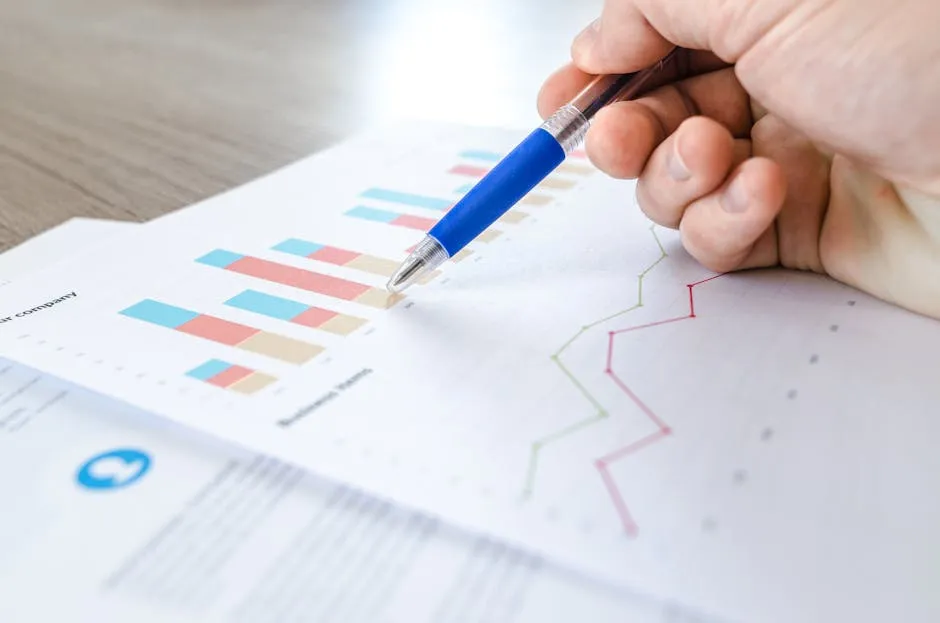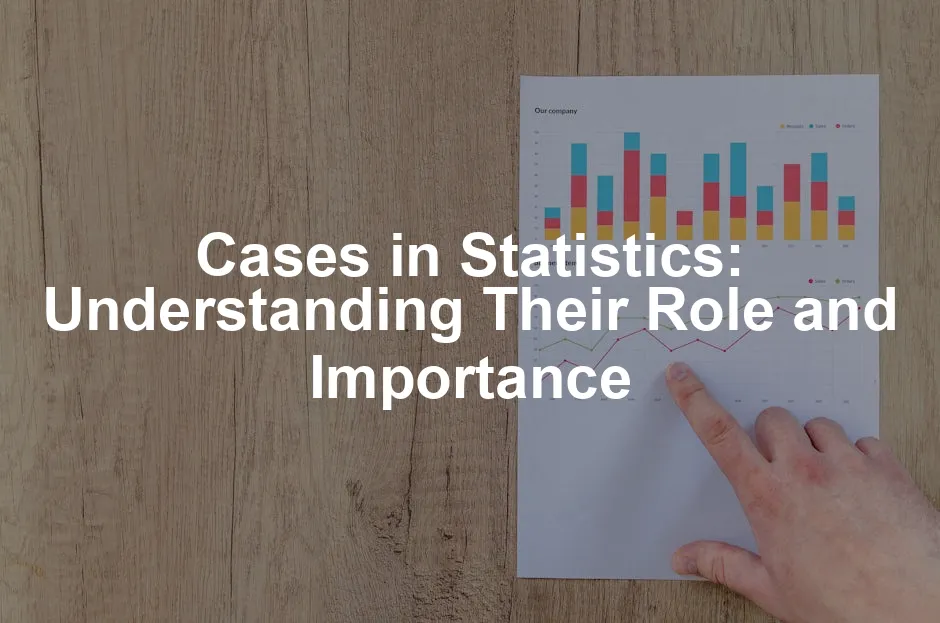Pros:
- In-Depth Understanding: Case studies provide a comprehensive view of the subject. They capture nuances that quantitative data may miss.
- Flexibility: Researchers can adapt their methods as new insights emerge. This adaptability makes case studies dynamic and responsive.
- Real-Life Context: They offer a grounded perspective, showing how theories apply in practical situations. This is especially valuable for fields that require contextual understanding.
Cons:
- Limited Generalizability: Findings from a case study may not apply to other contexts. What works for one group may not work for another, making broad conclusions tricky.
- Potential Bias: Researchers’ perspectives can influence the findings. This bias may skew results or interpretations.
- Time-Consuming: Conducting a thorough case study can take considerable time and resources. Gathering qualitative data often requires extensive interviews and observation periods.

In summary, case studies are powerful tools for understanding complex phenomena. They offer valuable insights through qualitative data, but researchers must be cautious about generalizing findings and potential biases. Balancing the richness of case studies with their limitations is key for effective research.
Conclusion
In this article, we’ve unraveled the concept of cases in statistics and their pivotal role in data analysis. Cases are the individual units of data that form the backbone of any dataset. They can represent people, plants, businesses, or anything else that researchers wish to study. Each case is accompanied by various variables, which are the attributes that provide depth and context to the data.
Understanding cases is essential for effective statistical analysis. They allow researchers to identify patterns, make comparisons, and draw valuable insights. Without clearly defined cases, data analysis can become a chaotic mess, leading to misleading conclusions. For those looking to deepen their statistical knowledge, I recommend checking out Naked Statistics: Stripping the Dread from the Data. It’s a fun read that makes statistics accessible and enjoyable!

We also discussed how cases can vary across different fields, including education, business, and biology. Each field applies cases in unique ways, allowing for tailored insights that drive decision-making. For more tips on effective data analysis, check out our article on tips for effective data analysis in economics and statistics.
Understanding cases is essential for effective statistical analysis. what are cases in statistics
As you dive into your own data analysis endeavors, remember to apply the insights gained from this article. Take the time to define your cases and understand their relationship with variables. By doing so, you’ll enhance your ability to analyze data effectively and extract meaningful conclusions that can inform your decisions. Happy analyzing!
FAQs
What are cases in statistics?
Cases in statistics refer to individual units of data collected for analysis. They can represent a variety of entities, such as people, plants, or objects, and are crucial for building datasets. Each case is linked to attributes known as variables, which provide additional information about the case.
How are cases and observations different?
Cases and observations are often used interchangeably, but they have subtle differences. A case represents the individual unit, while an observation refers to the recorded data for each variable related to that case. Essentially, each case can have multiple observations based on its variables.
Can a dataset have different types of cases?
Yes! A dataset can contain various types of cases depending on the research context. For instance, in a healthcare study, cases might include patients, while in a business analysis, cases could represent different stores. This flexibility allows for diverse insights from a single dataset.
Why is it important to define cases and variables clearly?
Defining cases and variables clearly is vital for accurate data analysis. Ambiguities can lead to confusion, misinterpretation, and flawed conclusions. Clear definitions ensure that all researchers understand the dataset, enhancing the reliability of the analysis and findings.
What are examples of cases in various fields?
In education, cases might be individual students, with variables like study time and exam scores. In business, cases could be individual stores, analyzing variables such as sales figures and customer counts. In biology, cases may represent different plant species, with variables like height, age, and health metrics.
Please let us know what you think about our content by leaving a comment down below!
Thank you for reading till here 🙂
All images from Pexels
Introduction
In statistics, “cases” refer to individual units of data collected in a study. These can be people, plants, schools, or even creatures from another planet if you’re feeling adventurous! Essentially, cases are the building blocks of any dataset. They provide the foundation for analysis, insights, and decision-making. Without cases, you’d be trying to make sense of a jigsaw puzzle without knowing what the picture looks like.
The significance of cases lies in their ability to represent the diversity within a population. They help statisticians gather valuable information, leading to insights that guide decisions in fields like education, business, and healthcare. When we collect data, each case comes packed with variables—attributes that describe the case. For instance, in a study of students, each student is a case, and their study hours or exam scores serve as variables.
Throughout this article, you’ll learn about the intricate relationship between cases and variables, discover how cases are represented in datasets, and delve into their crucial role in statistical analysis. By the end, you’ll have a clearer understanding of why cases matter in the world of statistics. So, buckle up and prepare for a ride through the fascinating landscape of statistical cases! If you’re looking to deepen your understanding, consider grabbing a copy of Statistical Analysis with Excel For Dummies. It’s packed with tips and tricks to make your data analysis journey smoother!

Understanding Cases in Statistics
What is a Case?
A case is the individual unit of data that researchers collect. Imagine a classroom full of students; each student is a distinct case. Just like a box of chocolates, each case can be different. You might have different flavors, or in this case, different attributes.
The terms “cases,” “individuals,” and “experimental units” are often used interchangeably. Think of them as synonyms in the vocabulary of statistics. Each case is represented in datasets as a row in a table. If you picture a spreadsheet, each row corresponds to a unique case, while each column represents a variable or attribute of that case.
For example, in a dataset about plants, each row might represent a different plant, and the columns would contain variables such as height, age, and health metrics. This organization allows for easy comparisons and analysis. To dive deeper into data organization and analysis, check out The Data Warehouse Toolkit: The Definitive Guide to Dimensional Modeling. It’s a must-read for anyone serious about data management!

The Role of Cases in Statistics
Cases form the backbone of any dataset. Without them, statistical analysis would be as useful as a chocolate teapot! The importance of cases can’t be overstated. They provide the real-world context necessary for analysis and decision-making.
When analysts examine cases, they can identify patterns and trends. For instance, in a business context, analyzing sales data across different stores (where each store is a case) can reveal which stores are performing well and which need improvement. If you’re interested in learning more about data mining techniques, consider Data Mining: Concepts and Techniques. It’s a great resource for understanding how to extract meaningful insights from your data!
Moreover, the presence of diverse cases in a dataset enhances the robustness of statistical findings. If a dataset only includes a handful of cases, any analysis might lead to misleading conclusions. Thus, a wide variety of cases helps to ensure that the results are valid and applicable to a broader population.
In summary, cases are not just numbers or entries in a database; they are essential components that drive statistical analysis. They allow researchers and analysts to make informed decisions based on real data, ultimately leading to better outcomes across various fields.

Types of Cases
Cases in Different Research Contexts
Not all cases are created equal! The nature of cases can vary widely depending on the research objectives. For instance, in social sciences, cases could be individuals, groups, or communities. Each brings a unique perspective to the table.
In healthcare, cases often represent patients. Researchers may analyze variables like age, diagnosis, and treatment outcomes. This helps in understanding health trends and improving patient care. If you’re curious about the statistical methods used in healthcare research, I recommend checking out The Art of Statistics: Learning from Data. It provides valuable insights into how statistics can inform healthcare decisions!
In business, cases might consist of companies, stores, or products. Analysts can explore how variables like market trends, revenue, and customer feedback correlate with each case type.
As we can see, the flexibility of cases across research contexts allows for tailored analysis. This adaptability is crucial for deriving relevant conclusions and actionable insights from data.

Longitudinal vs. Cross-Sectional Cases
Let’s distinguish between two key types of cases: longitudinal and cross-sectional. Longitudinal cases involve data collected over time, allowing researchers to observe changes and trends. For example, tracking the same group of students over several years can reveal how educational interventions impact their performance.
On the other hand, cross-sectional cases provide a snapshot of a population at one point in time. This type of data is useful for understanding current trends but may miss out on how things evolve. If you’re interested in diving deeper into statistical methods, I suggest Practical Statistics for Data Scientists: 50 Essential Concepts. It’s a fantastic resource for anyone looking to sharpen their statistical skills!
Understanding these distinctions is essential for selecting the appropriate analysis strategy. Each case type offers unique insights, helping researchers address specific questions and hypotheses effectively. Thus, whether it’s a longitudinal study or a cross-sectional analysis, recognizing the type of cases involved is vital for drawing accurate conclusions.

In summary, cases and variables are the lifeblood of statistical analysis. Understanding their relationship unlocks a treasure trove of insights applicable across various fields. Embrace the quirks and qualities of cases to better appreciate the world of statistics!
Building Effective Datasets: Best Practices
Data Collection Strategies
Before the data collection begins, it’s crucial to identify cases and variables. Cases are the individual units of analysis, while variables are their characteristics. Think of cases as the stars of the show, and variables as their attributes.
To ensure a robust dataset, start by defining what constitutes a case. Are you looking at students, plants, or perhaps a group of coffee enthusiasts? Next, outline the variables that will provide insight into these cases. For example, if your cases are students, variables might include age, study hours, and exam scores. If you’re into data visualization, check out Data Visualization: A Practical Introduction. It’s a great guide for creating meaningful visuals that tell your data’s story!

Sampling strategies play a significant role in data quality. Representative sampling ensures that your dataset mirrors the larger population. Consider using stratified sampling, where you divide the population into subgroups and sample from each. This method helps capture the diversity among cases.
Another effective method is random sampling, which gives every member of the population an equal chance of being selected. This technique minimizes bias, enhancing the validity of your findings. Remember, the quality of your data hinges on how well you identify and sample your cases.
Data Organization Tips
Once data is collected, organizing it correctly is paramount. A well-structured dataset is like a well-organized kitchen—it makes everything easier to find and use. Clarity in case and variable definitions is essential. Always specify what each case represents and what each variable measures.
Data frames are a popular tool for organizing data. They represent cases as rows and variables as columns, much like a spreadsheet. This format allows for efficient analysis and visualization. For instance, if you have a dataset of students, each row would correspond to a student, while the columns would hold variables like age, gender, and exam scores. If you’re interested in learning how to analyze data using Python, consider Python for Data Analysis: Data Wrangling with Pandas, NumPy, and IPython. It’s an excellent resource for mastering data manipulation!

Proper organization also aids in data cleaning. When cases are clearly defined, identifying and correcting errors becomes more manageable. So, treat your dataset like a garden—keep it tidy, prune the unnecessary bits, and watch it flourish!
Common Challenges and Solutions
Identifying cases and variables can come with its share of challenges. One common pitfall is ambiguity in definitions. If cases are not clearly defined, the results can become muddled, leading to incorrect conclusions. To avoid this, take the time to write down precise definitions for both cases and variables.
Another challenge is ensuring data integrity. Inaccurate or missing data can skew results. To maintain data integrity, implement regular checks and balances throughout the data collection process. For instance, consider using double data entry, where two people independently enter the same data. This method can catch errors before they become part of your analysis. If you’re looking for tech gadgets to help with data collection, check out Digital Voice Recorders. They can be a lifesaver for capturing interviews or meetings!

Lastly, be cautious of biases in your sampling methods. Always review your sampling strategy to ensure it accurately represents the population. Keeping these challenges in mind and addressing them proactively will enhance the quality of your datasets, paving the way for insightful analysis.
Case Studies: In-Depth Analyses
Definition and Purpose of Case Studies
A case study is a detailed examination of a particular subject. This can be a person, group, event, or phenomenon. Case studies are like the detective stories of statistics. They help us understand complexities that numbers alone often can’t explain. Unlike traditional statistical analyses that focus on quantifiable data, case studies dig deeper. They explore the “why” and “how” behind the numbers, providing insights that are rich in context.
Think of case studies as the spice in a dish—they add flavor! They allow researchers to gather qualitative data through interviews, observations, and document analysis. This qualitative data is valuable, especially when exploring unique or rare situations. Case studies aim to provide a holistic understanding of a subject. They are perfect for investigating real-life contexts where researchers have limited control over events. This makes them ideal for understanding processes in fields like healthcare, education, and business.

Examples of Case Studies
Let’s illustrate case studies with examples from various fields.
In healthcare, consider a case study examining how a new treatment affects chronic pain management. Researchers might follow a small group of patients over time, documenting their experiences, improvements, and challenges. This qualitative insight is crucial for understanding the treatment’s effectiveness beyond mere statistics. If you’re interested in the intersection of healthcare and data science, check out Data Science for Business: What You Need to Know About Data Mining and Data-Analytic Thinking. It’s a fantastic read for understanding how data can transform healthcare decisions!
In the business world, case studies can analyze how a specific company adapted to market changes. For instance, a study might focus on a retail chain’s response to e-commerce growth. Interviews and sales data help paint a picture of their strategies and outcomes.
In education, case studies can explore teaching methods in diverse classrooms. By closely examining a specific classroom environment, researchers can gather qualitative insights on how different approaches affect student engagement and learning outcomes. If you’re intrigued by educational data analysis, don’t miss The Data Science Handbook. It’s an excellent resource for educators looking to leverage data in their teaching!

These examples highlight the significance of qualitative data. It provides context and depth, allowing for a richer understanding of the subjects under study.
Pros and Cons of Case Studies
Like every tool, case studies come with their own set of advantages and disadvantages.
Pros:
- In-Depth Understanding: Case studies provide a comprehensive view of the subject. They capture nuances that quantitative data may miss.
- Flexibility: Researchers can adapt their methods as new insights emerge. This adaptability makes case studies dynamic and responsive.
- Real-Life Context: They offer a grounded perspective, showing how theories apply in practical situations. This is especially valuable for fields that require contextual understanding.
Cons:
- Limited Generalizability: Findings from a case study may not apply to other contexts. What works for one group may not work for another, making broad conclusions tricky.
- Potential Bias: Researchers’ perspectives can influence the findings. This bias may skew results or interpretations.
- Time-Consuming: Conducting a thorough case study can take considerable time and resources. Gathering qualitative data often requires extensive interviews and observation periods.

In summary, case studies are powerful tools for understanding complex phenomena. They offer valuable insights through qualitative data, but researchers must be cautious about generalizing findings and potential biases. Balancing the richness of case studies with their limitations is key for effective research.
Conclusion
In this article, we’ve unraveled the concept of cases in statistics and their pivotal role in data analysis. Cases are the individual units of data that form the backbone of any dataset. They can represent people, plants, businesses, or anything else that researchers wish to study. Each case is accompanied by various variables, which are the attributes that provide depth and context to the data.
Understanding cases is essential for effective statistical analysis. They allow researchers to identify patterns, make comparisons, and draw valuable insights. Without clearly defined cases, data analysis can become a chaotic mess, leading to misleading conclusions. For those looking to deepen their statistical knowledge, I recommend checking out Naked Statistics: Stripping the Dread from the Data. It’s a fun read that makes statistics accessible and enjoyable!

We also discussed how cases can vary across different fields, including education, business, and biology. Each field applies cases in unique ways, allowing for tailored insights that drive decision-making. For more tips on effective data analysis, check out our article on tips for effective data analysis in economics and statistics.
Understanding cases is essential for effective statistical analysis. what are cases in statistics
As you dive into your own data analysis endeavors, remember to apply the insights gained from this article. Take the time to define your cases and understand their relationship with variables. By doing so, you’ll enhance your ability to analyze data effectively and extract meaningful conclusions that can inform your decisions. Happy analyzing!
FAQs
Please let us know what you think about our content by leaving a comment down below!
Thank you for reading till here 🙂
All images from Pexels




